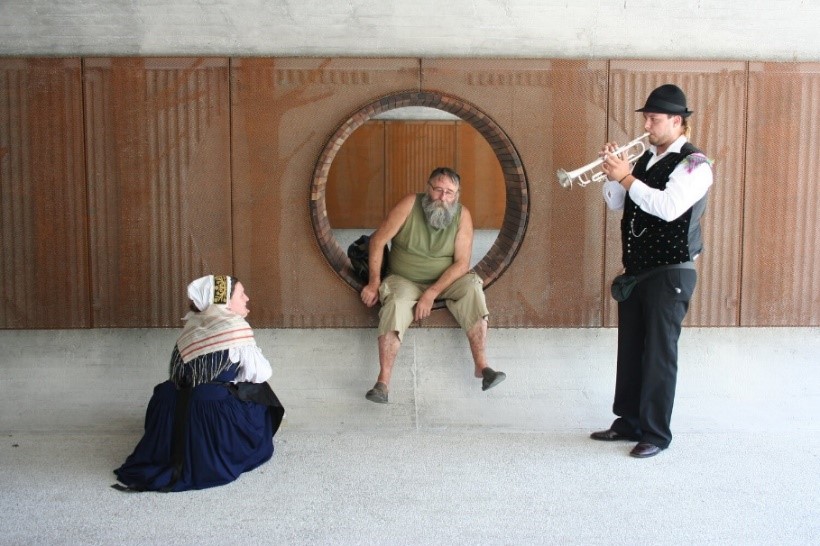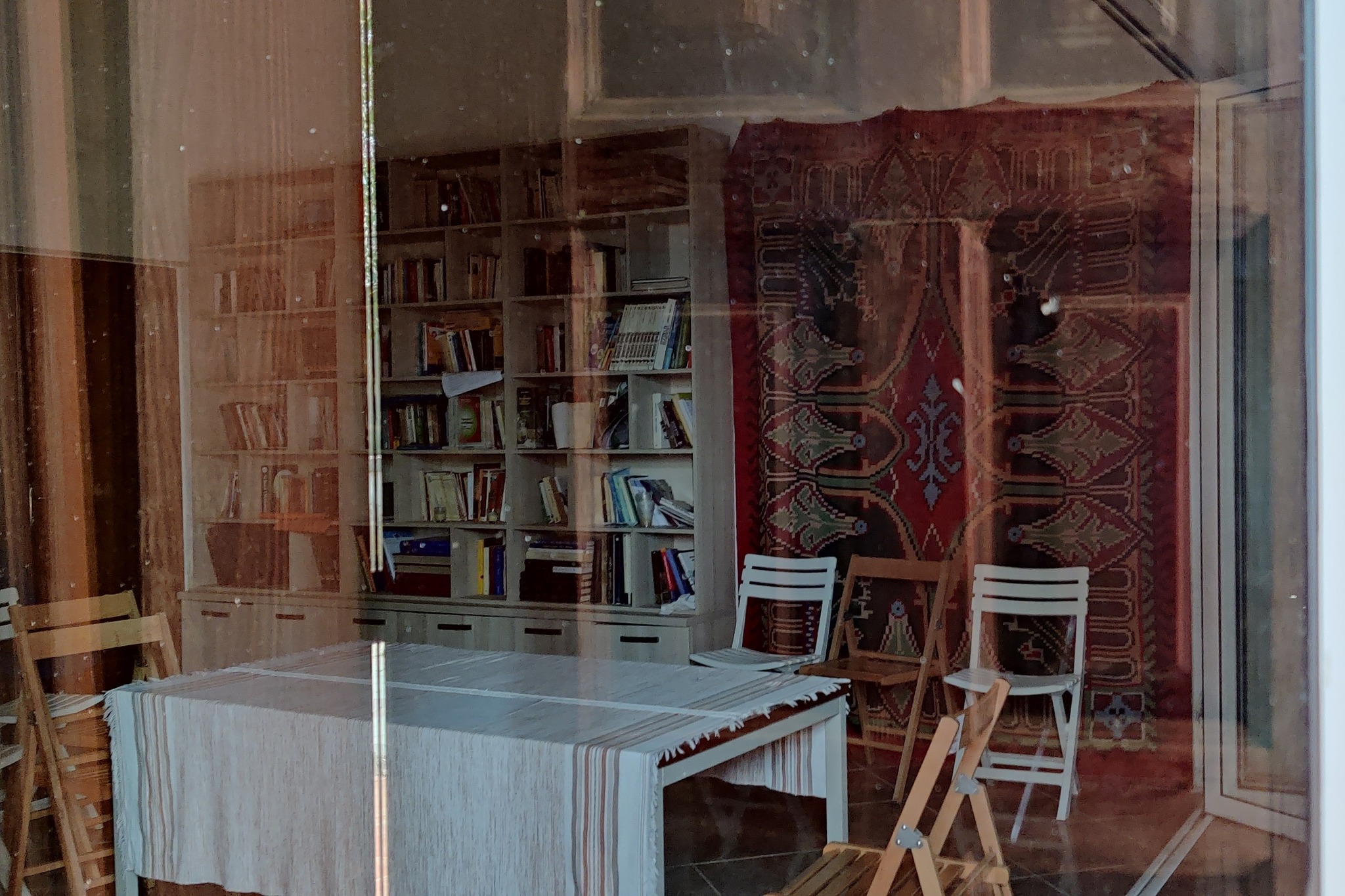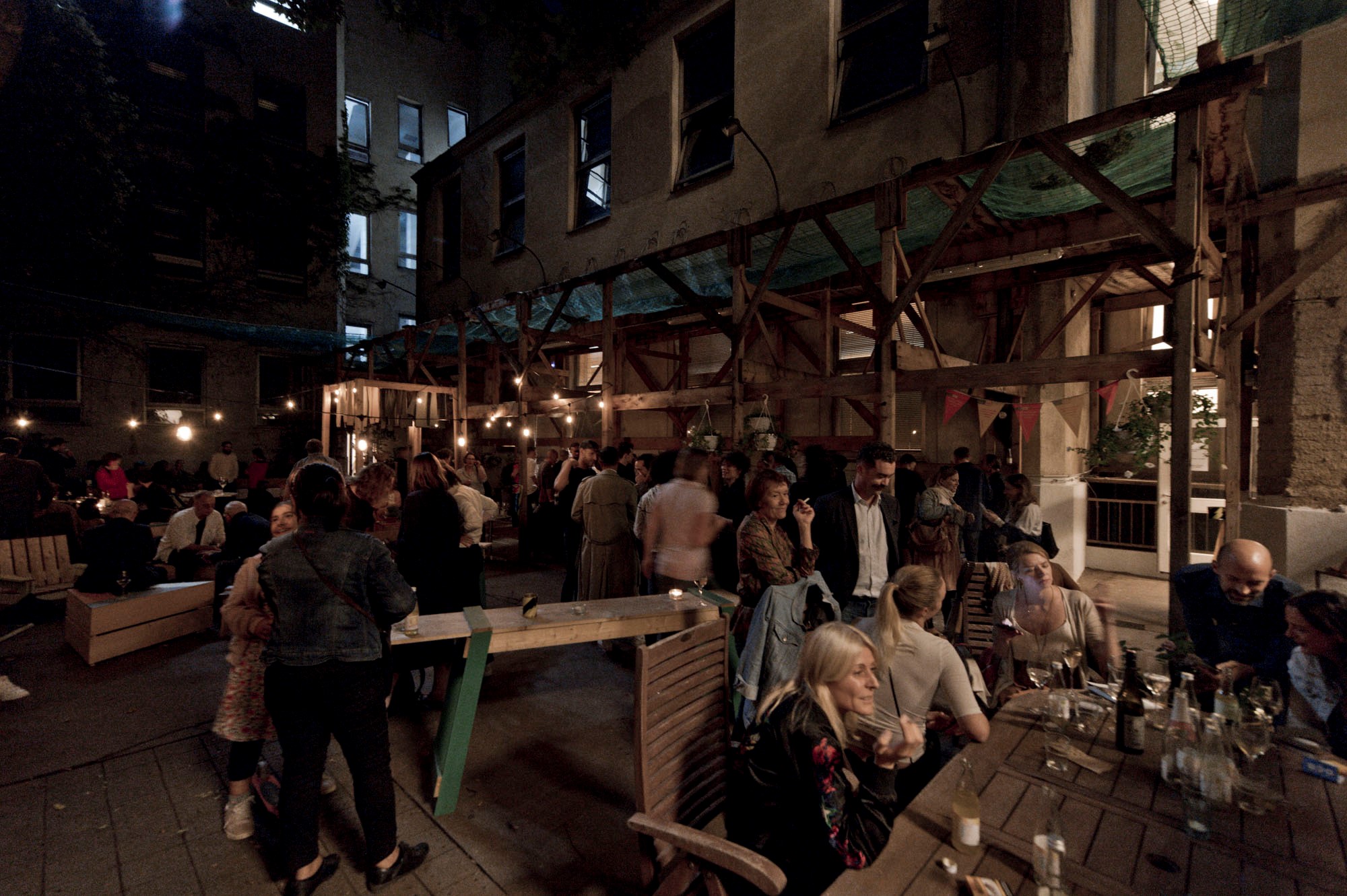Prostorož is a non-profit urban studio founded in 2004. It was the idea of three students who, while finishing their studies, noticed that there was not enough work being done on public space and started to carry out small-scale interventions.
Today, it is organised as an association and work in the public interest in the fields of space and culture. They are based in Ljubljana, but their activities cover the whole of Slovenia.
The interdisciplinary team consists of 5 full-time members:
- 2 architects (founders)
- urban planner (founder)
- sociologist and culturologist
- psychologist
- (additional member responsible for only one project: Library of stuff)
Their working principle is to first investigate the current situation and then intervene. Before making major changes, they first carry out a temporary intervention. So, they set up the beginnings of what could be changed and then see how the residents feel about it. Following the participatory spatial planning method, they want to work with the community and with local creators. Their work is characterised by a lot of communication, a lot of ideas and a lot of collaboration. They are aware that it is the local people who are most affected by the space, so they are keen to involve them in the interventions.
Their activities include urban planning and architecture, transport design, graphic design, participation and public involvement, communication and public relations, event organisation, temporary architecture, consulting.
When designing public spaces, it is important to understand that public space is different from its architecture. Nowadays, people are less at home and spend more time outside. People’s leisure time moves into the public space, which became an outdoor living room. When it comes to a public place, it is necessary to achieve that, for example, teenagers and the elderly feel comfortable in the same space. Vulnerable groups should also be taken into account, and the space has to be adjusted to them. Another important factor is the impact of the space on the feeling of safety. Therefore, when intervening in public space, the social aspect of the space is also of paramount importance, not just the space itself.
The project intervenes in different spaces. From those that are not abandoned per se (e.g. car parks), to more or less used concrete platforms, to abandoned construction pits and buildings.

Challenges and Opportunities
One of the biggest challenges faced in different spatial projects is ownership. This is where the accountability aspect is particularly notable. The first major problem is shared ownership. In the case of abandoned spaces, the problem is often that the space is divided between different owners and, as a consequence, responsibility for the care of the space is dispersed. A concrete example is a platform between the museums in Ljubljana, where part of the platform belongs to each of them. This leads to the fact that they cannot even take care of, for example, the water in the fountain.
The second major challenge is to ensure the sustainability of change. It is not enough for the team to drive change and for local people to embrace it. It is also always necessary to make sure that someone maintains the interventions. For example, community projects also need to identify a person to whom local people can address their wishes for the space. This is a problem with both municipalities and private owners, that they cannot guarantee that someone will maintain the space and that it will not fall into disrepair.
Car parks occupy a large part of public spaces and increase traffic volume in certain areas (e.g. next to natural landmarks). At the same time, the need for car parking and the perceived lack of it is one of the modern problems of the population (especially in cities). Therefore, local residents are sensitive when parking spaces are subject to intervention. The Prostorož team meets this challenge by first making parking interventions short-term (e.g. for one week). This gives residents an experiential insight into the benefits of such interventions.
At a systemic level, the problem is that there are no detailed plans and no vision for construction. The building is more on a need basis, with no guidelines and provisions that take into account different aspects (e.g. climate change). A concrete example is urban heating. While the team can work on small interventions and do a lot of research (e. g. on the most heated parts of the city), these are not enough if there is no vision at a systemic level on how to deal with this.
Prostorož operates as a non-profit association, which allows them to apply for calls for funding. This represents their main source of funding.
In their work, they collaborate a lot with the municipalities, since they often need permission from them to carry out interventions. The relationship with the municipalities is therefore of utmost importance. Some of the municipalities also give them non-profit contracts to carry out projects, which is another source of funds. The activities they carry out for the municipalities include lectures for staff, workshops for children, small one-day projects etc.
A small part of their funding is obtained through for-profit contracts, which are rare.
The projects they carry out vary in size (from small changes to bigger environmental interventions), and type of activities (spatial interventions, workshops, lectures etc.). Even for larger initiatives, they typically start with small and temporary interventions and then see what the consequences are. With any change, their goal is to make it sustainable. This means that they always have to find someone responsible to maintain these changes as already mentioned in the challenges.

Leasons learned
The idea is that we can change public space through small and large initiatives. But it is important to implement these changes from a societal perspective. We need to always keep in mind the community that uses the space. It is necessary to cooperate with them and make changes in agreement with them. Needs research is essential before the initiative can be implemented. Then, the participatory spatial planning method comes to the fore.
The projects are mainly the result of the initiative of young people who are committed to change. In some cases of good cooperation with municipalities, they also become actively involved in the intervention.
This case is highly relevant for young people in peripheral environments, as they aim to involve young creators, especially local people. It can also serve as an inspiration for young people to start thinking proactively about their own environment and possible interventions.
Spatial interventions focus on equality and equal representation of different social groups. Intergenerational aspects, vulnerable groups, security, gender equality, etc. are taken into account. One example of the issues addressed by Prostorož are playgrounds: the renovation of school playgrounds focuses mainly on football and basketball courts, where the users are predominantly boys. However, less consideration or space is given to the activities that girls do on the playground.
Another example is the passageways in the city, which were perceived by citizens as unsafe. Various interventions have been made to improve some underpasses, encourage more frequent gatherings there and thus reduce the sense of danger.
All these changes have a common purpose. A better environment for the whole community to live in.
From an environmental point of view, Prostorož addresses mainly climate change. A study was carried out to find out which are the “hot spots” in the capital. They asked residents which locations they avoid in summer because they are not shaded enough. They have also developed a proposal for interventions to increase shade but would need more input from the municipality to implement it. Another study was carried out in the area of clinics in the capital, where it was found that there was not enough shade or parks for patients. The guiding principles for all projects are that water is available, that there is enough greenery, or that tree planting is encouraged.
The projects are mostly non-profit. They mainly impact the local community, where the biggest challenge is to maintain these changes and ensure their long-term sustainability.
Extracted from the Research Report. Prepared by STEP Institute.



